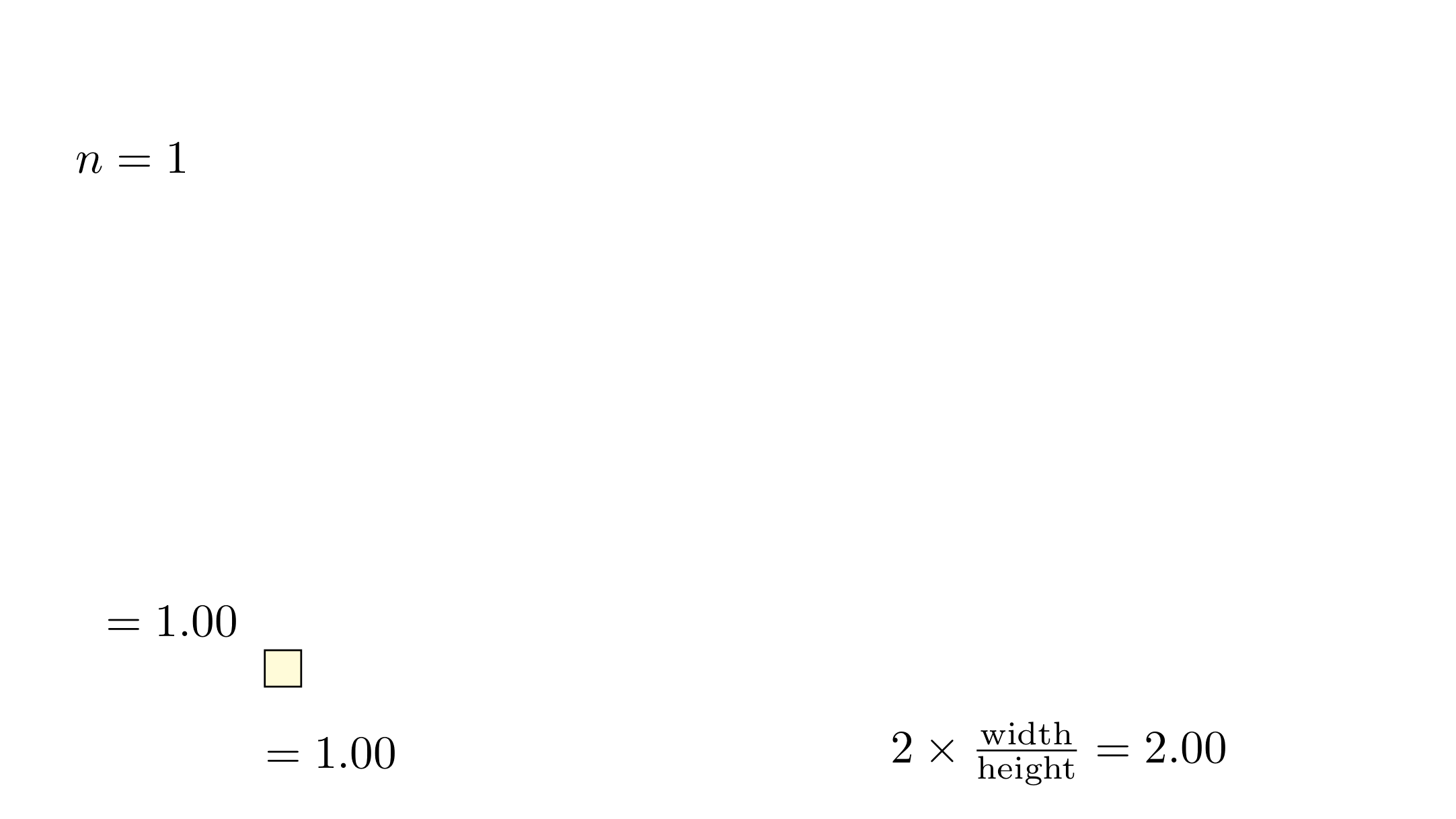Allow me to tell you about an interesting construction I learned from the Stewart’s Calculus book. Start with a square of area one. Next, extend your current rectangle, alternately, on top or beside, by another rectangle of area one. The first 500 steps of this construction are shown below.

If you watch the animation carefully, you will notice that, as increases, two times the ratio of width and height seems to approach a number close to 3.14 – and what else could it be if not
Let us look closer on what happens here; set to be the width of our figure at step
, and, similarly,
the height. Obviously, we start with
When we extend the rectangle, we add some number to either or
(depending on whether it’s width’s or height’s turn to be extended). The situation is symmetrical so we can assume it is width’s turn, and therefore
. Whatever we add, however, say a number
, it must be the case that
is equal to one. Thus,
, and so
by symmetry we get
It follows by induction that
Now we need to tackle the infinite product. There is a quite known reduction formula that is helpful here:
To prove the above, set
and integrate by parts. Note that if we integrate from
to
, the first part of the summand dissapears as
and
. Therefore, we have
Denote the above integral by . Using foregoing formula, it is easy to see that
Now, use squeeze theorem to get . But
so, by combining everything, indeed
as the animation suggested!